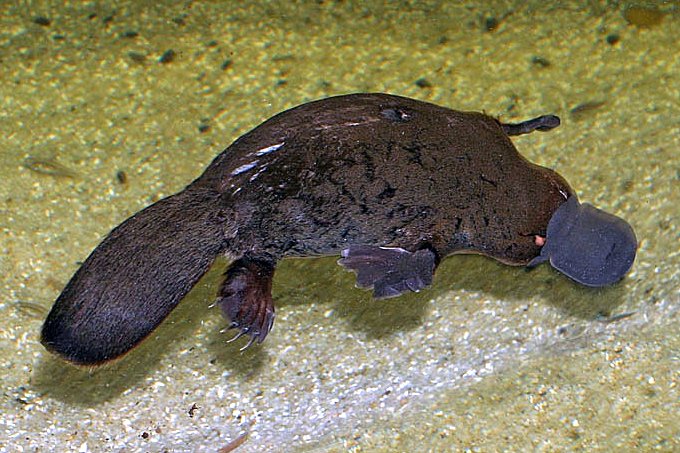|
Vaccinating
Vaccination is the administration of a vaccine to help the immune system develop immunity from a disease. Vaccines contain a microorganism or virus in a weakened, live or killed state, or proteins or toxins from the organism. In stimulating the body's Adaptive immune system, adaptive immunity, they help prevent sickness from an infectious disease. When a sufficiently large percentage of a population has been vaccinated, herd immunity results. Herd immunity protects those who may be immunocompromised and cannot get a vaccine because even a weakened version would harm them. The effectiveness of vaccination has been widely studied and verified. Vaccination is the most effective method of preventing infectious diseases; widespread immunity due to vaccination is largely responsible for the Eradication of infectious diseases, worldwide eradication of smallpox and the elimination of diseases such as polio and tetanus from much of the world. According to the World Health Organization ... [...More Info...] [...Related Items...] OR: [Wikipedia] [Google] [Baidu] |
Herd Immunity
Herd immunity (also called herd effect, community immunity, population immunity, or mass immunity) is a form of indirect protection that applies only to contagious diseases. It occurs when a sufficient percentage of a population has become immune to an infection, whether through previous infections or vaccination, that the communicable pathogen cannot maintain itself in the population, its low incidence thereby reducing the likelihood of infection for individuals who lack immunity. Once the herd immunity has been reached, disease gradually disappears from a population and may result in eradication or permanent reduction of infections to zero if achieved worldwide. Herd immunity created via vaccination has contributed to the reduction of many diseases. Effects Protection of those without immunity Some individuals either cannot develop immunity after vaccination or for medical reasons cannot be vaccinated. Newborn infants are too young to receive many vaccines, either for sa ... [...More Info...] [...Related Items...] OR: [Wikipedia] [Google] [Baidu] |
Rabies
Rabies is a viral disease that causes encephalitis in humans and other mammals. It was historically referred to as hydrophobia ("fear of water") because its victims panic when offered liquids to drink. Early symptoms can include fever and abnormal sensations at the site of exposure. These symptoms are followed by one or more of the following symptoms: nausea, vomiting, violent movements, uncontrolled excitement, fear of water, an inability to move parts of the body, confusion, and loss of consciousness. Once symptoms appear, the result is virtually always death. The time period between contracting the disease and the start of symptoms is usually one to three months but can vary from less than one week to more than one year. The time depends on the distance the virus must travel along Peripheral nervous system, peripheral nerves to reach the central nervous system. Rabies is caused by lyssaviruses, including the rabies virus and Australian bat lyssavirus. It is spread when an i ... [...More Info...] [...Related Items...] OR: [Wikipedia] [Google] [Baidu] |
Edward Jenner
Edward Jenner (17 May 1749 – 26 January 1823) was an English physician and scientist who pioneered the concept of vaccines and created the smallpox vaccine, the world's first vaccine. The terms ''vaccine'' and ''vaccination'' are derived from ''Variolae vaccinae'' ('pustules of the cow'), the term devised by Jenner to denote cowpox. He used it in 1798 in the title of his ''Inquiry into the Variolae vaccinae known as the Cow Pox'', in which he described the protective effect of cowpox against smallpox. Jenner is often called "the father of immunology", and his work is said to have saved "more lives than any other man". In Jenner's time, smallpox killed around 10% of the global population, with the number as high as 20% in towns and cities where infection spread more easily. In 1821, he was appointed physician to King George IV, and was also made mayor of Berkeley and justice of the peace. He was a member of the Royal Society. In the field of zoology, he was among the firs ... [...More Info...] [...Related Items...] OR: [Wikipedia] [Google] [Baidu] |
Inoculation
Inoculation is the act of implanting a pathogen or other microbe or virus into a person or other organism. It is a method of artificially inducing immunity against various infectious diseases. The term "inoculation" is also used more generally to refer to intentionally depositing microbes into any growth medium, as into a Petri dish used to culture the microbe, or into food ingredients for making cultured foods such as yoghurt and fermented beverages such as beer and wine. This article is primarily about the use of inoculation for producing immunity against infection. Inoculation has been used to eradicate smallpox and to markedly reduce other infectious diseases such as polio. Although the terms "inoculation", "vaccination", and "immunization" are often used interchangeably, there are important differences. Inoculation is the act of implanting a pathogen or microbe into a person or other recipient; vaccination is the act of implanting or giving someone a vaccine specifical ... [...More Info...] [...Related Items...] OR: [Wikipedia] [Google] [Baidu] |
Immunogen
An immunogen is any substance that generates B-cell (humoral/antibody) and/or T-cell (cellular) adaptive immune responses upon exposure to a host organism. Immunogens that generate antibodies are called antigens ("antibody-generating"). Immunogens that generate antibodies are directly bound by host antibodies and lead to the selective expansion of antigen-specific B-cells. Immunogens that generate T-cells are indirectly bound by host T-cells after processing and presentation by host antigen-presenting cells. An immunogen can be defined as a complete antigen which is composed of the macromolecular carrier and epitopes (determinants) that can induce immune response. An explicit example is a hapten. Haptens are low-molecular-weight compounds that may be bound by antibodies, but cannot elicit an immune response. Consequently, the haptens themselves are nonimmunogenic and they cannot evoke an immune response until they bind with a larger carrier immunogenic molecule. The hapten-car ... [...More Info...] [...Related Items...] OR: [Wikipedia] [Google] [Baidu] |
Artificial Induction Of Immunity
Artificial induction of immunity is immunization achieved by human efforts in preventive healthcare, as opposed to (and augmenting) natural immunity as produced by organisms' immune systems. It makes people immune to specific diseases by means other than waiting for them to catch the disease. The purpose is to reduce the risk of death and suffering, that is, the disease burden, even when eradication of the disease is not possible. Vaccination is the chief type of such immunization, greatly reducing the burden of vaccine-preventable diseases. Immunity against infections that can cause serious illness is beneficial. Founded on a germ theory of infectious diseases, as demonstrated by Louis Pasteur's discoveries, modern medicine has provided means for inducing immunity against a widening range of diseases to prevent the associated risks from the wild infections. It is hoped that further understanding of the molecular basis of immunity will translate to improved clinical practice i ... [...More Info...] [...Related Items...] OR: [Wikipedia] [Google] [Baidu] |
Polio Vaccination In Sweden 1957
Poliomyelitis ( ), commonly shortened to polio, is an infectious disease caused by the poliovirus. Approximately 75% of cases are asymptomatic; mild symptoms which can occur include sore throat and fever; in a proportion of cases more severe symptoms develop such as headache, neck stiffness, and paresthesia. These symptoms usually pass within one or two weeks. A less common symptom is permanent paralysis, and possible death in extreme cases.. Years after recovery, post-polio syndrome may occur, with a slow development of muscle weakness similar to what the person had during the initial infection. Polio occurs naturally only in humans. It is highly infectious, and is spread from person to person either through fecal–oral transmission (e.g. poor hygiene, or by ingestion of food or water contaminated by human feces), or via the oral–oral route. Those who are infected may spread the disease for up to six weeks even if no symptoms are present. The disease may be diagnosed by ... [...More Info...] [...Related Items...] OR: [Wikipedia] [Google] [Baidu] |
National Vaccine Injury Compensation Program
The Office of Special Masters of the U.S. Court of Federal Claims, popularly known as "vaccine court", administers a no-fault system for litigating vaccine injury claims. These claims against vaccine manufacturers cannot normally be filed in state or federal civil courts, but instead must be heard in the U.S. Court of Federal Claims, sitting without a jury. The National Vaccine Injury Compensation Program (VICP or NVICP) was established by the 1986 National Childhood Vaccine Injury Act (NCVIA), passed by the United States Congress in response to a threat to the vaccine supply due to a 1980s scare over the DPT vaccine. Despite the belief of most public health officials that claims of side effects were unfounded, large jury awards had been given to some plaintiffs, most DPT vaccine makers had ceased production, and officials feared the loss of herd immunity. Between its inception in 1986 and May 2023, it has awarded a total of $4.6 billion, with the average award amount between ... [...More Info...] [...Related Items...] OR: [Wikipedia] [Google] [Baidu] |
Vaccine Controversy
Vaccine hesitancy is a delay in acceptance, or refusal of vaccines despite availability and supporting evidence. The term covers refusals to vaccinate, delaying vaccines, accepting vaccines but remaining uncertain about their use, or using certain vaccines but not others. Although adverse effects associated with vaccines are occasionally observed, the scientific consensus that vaccines are generally safe and effective is overwhelming. Vaccine hesitancy often results in disease outbreaks and deaths from vaccine-preventable diseases. Therefore, the World Health Organization characterizes vaccine hesitancy as one of the top ten global health threats. Vaccine hesitancy is complex and context-specific, varying across time, place and vaccines. It can be influenced by factors such as lack of proper scientifically based knowledge and understanding about how vaccines are made or work, as well as psychological factors including fear of needles and distrust of public authorities, a perso ... [...More Info...] [...Related Items...] OR: [Wikipedia] [Google] [Baidu] |





